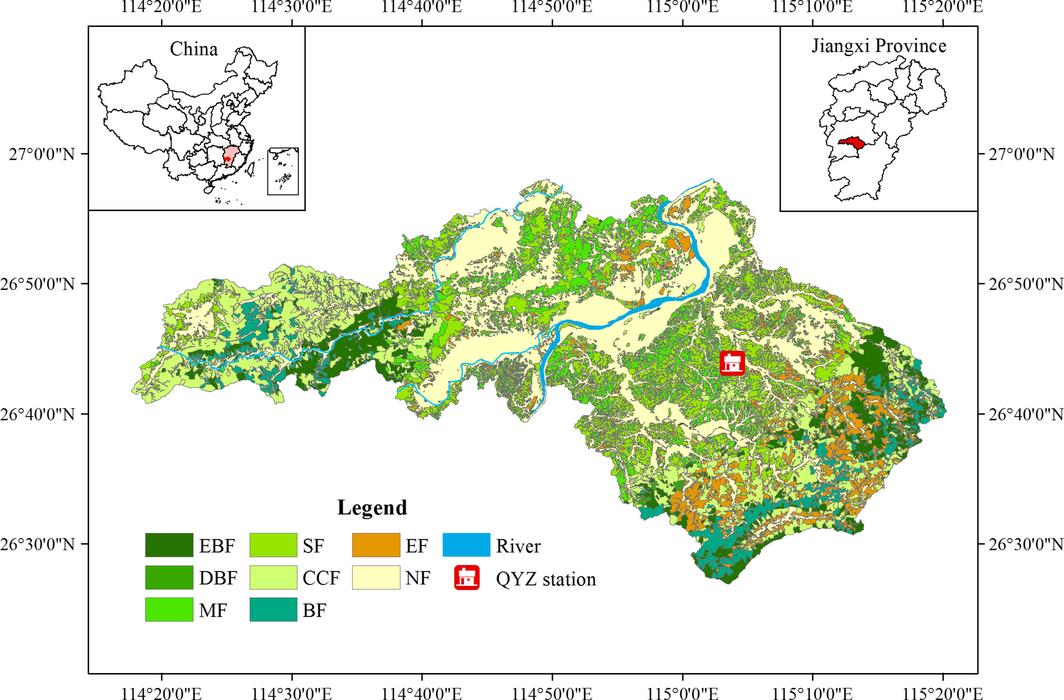
全球气候变暖对陆地生态系统尤其是森林生态系统有着重要的影响,气温升高、辐射强迫的增强将显著改变森林生态系统的结构和功能。为探究我国南方森林对未来气候变化的响应机制,降低未来气候变化可能带来的损失,有必要模拟与预测不同树种、不同森林类型在不同气候情景下森林分布及森林地上生物量的变化。日前,中科院地理科学与资源研究所研究员戴尔阜团队在未来气候变化对我国南方森林的影响研究方面取得进展,相关成果发布于《全球变化生物学》。
科研人员采用最新的3种典型浓度排放路径气候情景预估数据和一个控制情景数据,应用某生态系统过程模型和某森林景观动态模型模拟了2010-2100年江西省泰和县森林分布及森林地上生物量变化,探究树种、森林类型和森林景观对未来气候变化的响应差异。
研究发现了未来气候变化将显著影响泰和县森林空间分布格局,其中常绿阔叶林面积将逐渐增大,在未来演替过程中将侵占人工杉木林。同时,在未来气候情景下森林地上生物量呈现先增加后降低的变化趋势。尽管森林地上生物量的空间格局在各个气候情景下较为一致,但不同树种、不同森林类型之间在总量上仍存在较大差异。
研究结果表明,不同树种和森林类型对未来气候变化的响应差异主要来自于不同树种对生态因子耐受范围的差异,过度的增温将不利于针叶树种以及一些落叶阔叶树种的生长与建立。在未来气候变暖的情景下,常绿阔叶林比人工针叶林显示出更强的适应能力。(来源:科学网 彭科峰)
Predicting the responses of forest distribution and aboveground biomass to climate change under RCP scenarios in southern China
Abstract In the past three decades, our global climate has been experiencing unprecedented warming. This warming has and will continue to significantly influence the structure and function of forest ecosystems. While studies have been conducted to explore the possible responses of forest landscapes to future climate change, the representative concentration pathways (RCPs) scenarios under the framework of the Coupled Model Intercomparison Project Phase 5 (CMIP5) have not been widely used in quantitative modeling research of forest landscapes. We used LANDIS-II, a forest dynamic landscape model, coupled with a forest ecosystem process model (PnET-II), to simulate spatial interactions and ecological succession processes under RCP scenarios, RCP2.6, RCP4.5 and RCP8.5, respectively. We also modeled a control scenario of extrapolating current climate conditions to examine changes in distribution and aboveground biomass (AGB) among five different forest types for the period of 2010–2100 in Taihe County in southern China, where subtropical coniferous plantations dominate. The results of the simulation show that climate change will significantly influence forest distribution and AGB. (i) Evergreen broad-leaved forests will expand into Chinese fir and Chinese weeping cypress forests. The area percentages of evergreen broad-leaved forests under RCP2.6, RCP4.5, RCP8.5 and the control scenarios account for 18.25%, 18.71%, 18.85% and 17.46% of total forest area, respectively. (ii) The total AGB under RCP4.5 will reach its highest level by the year 2100. Compared with the control scenarios, the total AGB under RCP2.6, RCP4.5 and RCP8.5 increases by 24.1%, 64.2% and 29.8%, respectively. (iii) The forest total AGB increases rapidly at first and then decreases slowly on the temporal dimension. (iv) Even though the fluctuation patterns of total AGB will remain consistent under various future climatic scenarios, there will be certain responsive differences among various forest types.
原文链接:http://onlinelibrary.wiley.com/doi/10.1111/gcb.13307/pdf




